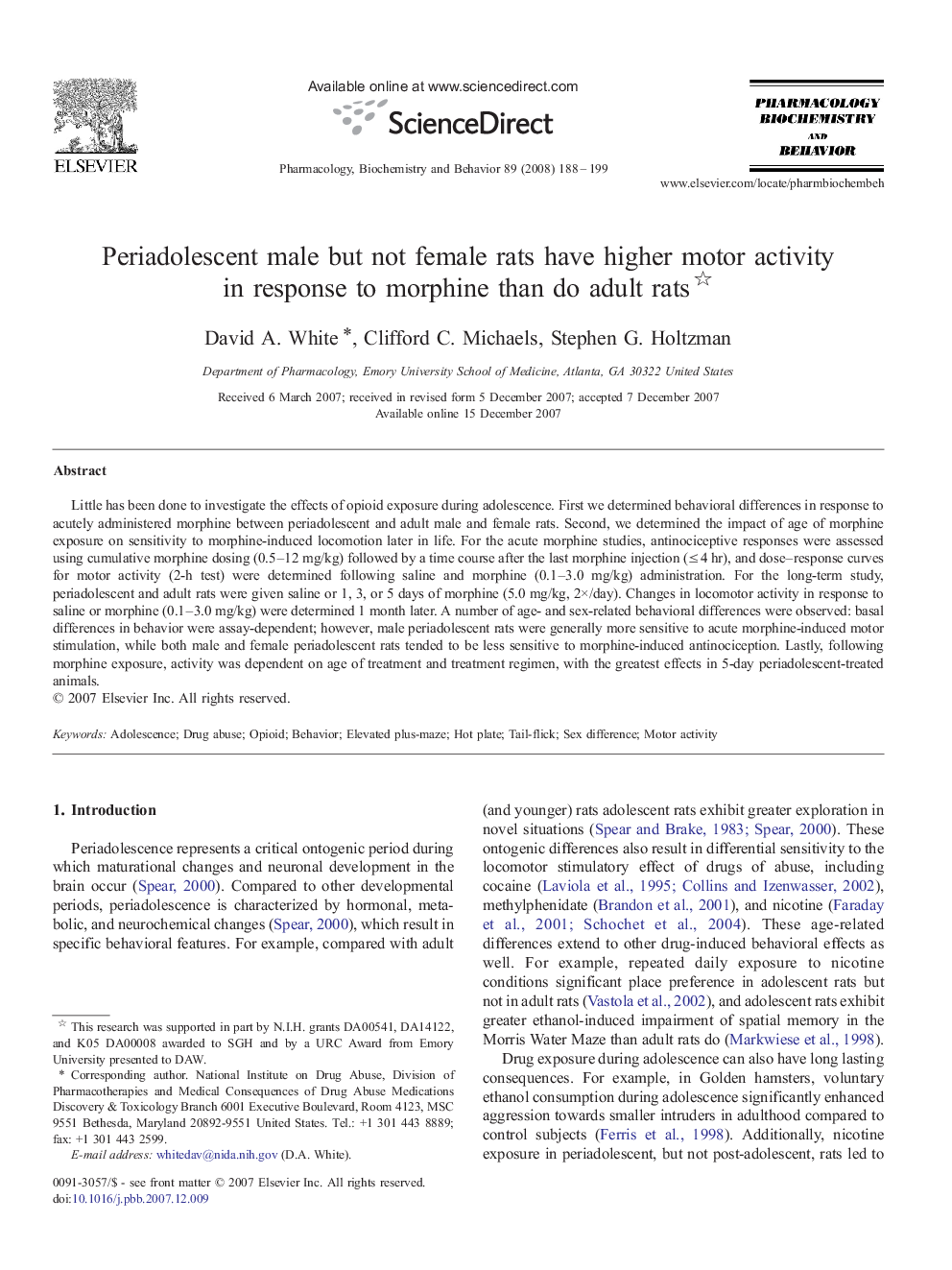| Article ID | Journal | Published Year | Pages | File Type |
|---|---|---|---|---|
| 2013550 | Pharmacology Biochemistry and Behavior | 2008 | 12 Pages |
Little has been done to investigate the effects of opioid exposure during adolescence. First we determined behavioral differences in response to acutely administered morphine between periadolescent and adult male and female rats. Second, we determined the impact of age of morphine exposure on sensitivity to morphine-induced locomotion later in life. For the acute morphine studies, antinociceptive responses were assessed using cumulative morphine dosing (0.5–12 mg/kg) followed by a time course after the last morphine injection (≤ 4 hr), and dose–response curves for motor activity (2-h test) were determined following saline and morphine (0.1–3.0 mg/kg) administration. For the long-term study, periadolescent and adult rats were given saline or 1, 3, or 5 days of morphine (5.0 mg/kg, 2×/day). Changes in locomotor activity in response to saline or morphine (0.1–3.0 mg/kg) were determined 1 month later. A number of age- and sex-related behavioral differences were observed: basal differences in behavior were assay-dependent; however, male periadolescent rats were generally more sensitive to acute morphine-induced motor stimulation, while both male and female periadolescent rats tended to be less sensitive to morphine-induced antinociception. Lastly, following morphine exposure, activity was dependent on age of treatment and treatment regimen, with the greatest effects in 5-day periadolescent-treated animals.
